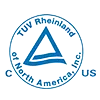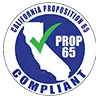As a driver, being alert and responsive to road signs is crucial for safety. One important traffic sign to know is the flagger ahead sign. When you see this sign, it means there are workers ahead directing traffic.
In this comprehensive guide, we'll cover everything you need to know about the flagger ahead sign, why it's used, how to respond, and how flaggers control traffic flow. Whether you're new to driving or just need a refresher, keep reading to learn more about this vital road sign.
What is the Flagger Ahead Sign?
The flagger ahead sign is a fluorescent orange-colored warning sign used to alert drivers that a flagger is present in the roadway ahead. It will usually be posted in advance of a work zone or temporary traffic control zone.
A flagger is a trained traffic control person who provides direction and manages the flow of traffic through or around road work areas. Flaggers use visual signals like signs, paddles, and hand gestures to guide vehicles safely through the work zone. They serve a critical role in work zone safety.
The diamond-shaped flagger ahead sign depicts a flagger holding a paddle to control traffic. It indicates that a flagger is actively controlling and directing traffic just ahead. Drivers should be prepared to obey the flagger’s signals immediately upon approaching the sign.
Why is the Flagger Ahead Sign Used?
This warning sign is an essential tool to alert motorists that they are entering an active work zone with a flagger present. There are several reasons why it is vital:
Warns drivers there is a person in the roadway ahead directing traffic so they are not surprised. This prevents confusion and abrupt, unsafe stopping.
Signals drivers to prepare to obey the flagger’s directions, slow down, and drive cautiously through the work zone.
Reduces speeding through the work area, keeping flaggers and road workers safe. Drivers tend to comply better when signs indicate a flagger is present.
High visibility sign color catches drivers' attention even from a distance.
Posted in advance so drivers have time to react properly to the upcoming flagger.
Reminds drivers of state laws that require obeying flaggers and reduced speed limits in work zones.
The sign is all about giving motorists ample warning to provide for a smooth, safe transition through areas controlled by a flagger.
How Should You Respond to a Flagger Ahead Sign?
When you see the fluorescent flagger ahead sign, there are certain actions you should take as a driver:
Slow Down Brake and reduce your speed significantly before reaching the flagger area. Follow any reduced work zone speed limits posted.
Increase Alertness Pay close attention to your surroundings and any instructions given by the flagger. Avoid distractions.
Prepare to Stop Flaggers will often stop traffic, so be ready to come to a complete stop when directed. Avoid tailgating.
Obey Flagger Signals Carefully follow all signals given by paddle, hand, horn or flag. Don't try to second-guess the flagger.
Maintain Control Keep full control of your vehicle as you approach and pass through the active work zone.
Pass With Care Only proceed through the area when clearly directed by the flagger. Don't change lanes erratically.
Watch for Workers Drive cautiously near any road workers or moving equipment in the work zone.
By taking these precautions, you can safely navigate any flagger-controlled zone. Remember, failure to obey a flagger is illegal and puts lives in danger.
Flagger Control of Traffic Flow
Flaggers have a complex and vital job managing the flow of traffic through road construction and maintenance zones. Here is how they skillfully direct vehicles:
Flaggers assess oncoming traffic to determine proper time to stop, release or redirect vehicles. They avoid needlessly halting traffic for efficiency.
They use sign paddles, flags or hand signals to provide clear, visible instructions that are universally understood by drivers.
They will halt traffic with "Stop" paddles before contructuon equipment crosses lanes. Once equipment passes, they authorize vehicles to proceed.
When necessary, they alternate right-of-way, allowing vehicles from one direction to pass through first.
They monitor vehicles approaching from both directions, safely transitioning from allowing flow in one direction to the other.
They give a consistent set of paddles signals as each car approaches, ensuring smooth individual vehicle movement.
If lanes narrow, they space out cars and trucks to prevent crowding, stalling or collisions.
They work to reduce traffic backup by coordinating with any temporary traffic signals in the area.
They re-route vehicles as needed for road changes, like blocked off lanes or temporary detours.
It's a demanding job that requires excellent traffic management skills, a keen eye, quick reflexes, and unwavering vigilance.
Flagger Hand Signals and Paddle Movements
Flaggers use a specific set of hand motions and paddle signals to direct drivers:
Stop Paddle Held still in "Stop" position means come to a complete stop and do not proceed.
Raised Hand Held up in traditional halt gesture means come to a full stop.
Waving Hand Waved back and forth means proceed slowly and with caution.
Outstretched arm Pointed in direction means proceed only in pointed direction.
Vertical paddle Held upright means proceed straight through ahead.
Horizontal paddle Held parallel to ground means stop.
Diagonal raised paddle Held angled up means proceed left.
Diagonal lowered paddle Held angled down means proceed right.
Circular motion Paddle moved in circles means proceed in direction of motion.
Always follow the flagger's signals precisely. Don't try to interpret their motions just react and obey.
Flagger Safety and Visibility
To stay safe on dangerous roadways and maintain visibility, flaggers wear specialized high-visibility gear:
Bright colored safety vests, most often orange or yellow, that can be seen from a distance.
Vests may have reflective strips that shine when illuminated at night.
Hard hats to protect their heads from hazards.
Dark sunglasses to shield eyes from glare and help sight approaching vehicles.
Ankle wraps, gloves and leggings with reflective markings for increased visibility.
Paddles at least 18 inches wide with 6 inch "STOP" and "SLOW" text for easy reading.
Lights attached to paddles for enhanced sign visibility at night.
This visible gear alerts drivers to their presence, critical in avoiding collisions.
Flagger Training and Certification
Controlling busy roadway traffic safely requires specialized training. While requirements vary by state, flaggers typically must:
Pass a work zone flagger training course teaching traffic regulations, proper flagging techniques, safety protocols and emergency procedures.
Obtain a state flagger certification by passing an exam demonstrating knowledge of flagging principles.
Get recertified periodically to stay up to date on the latest work zone best practices.
Have several years of work experience in construction zones.
Maintain mental alertness, physical fitness and response readiness.
Proper training gives flaggers the skills to expertly direct even heavy traffic flow safely in challenging work zones.
Conclusion
I hope this guide has underscored the importance of the fluorescent flagger ahead warning sign. Being aware of its meaning and how to respond allows you to safely navigate areas controlled by flaggers. Remember to slow down, increase alertness, obey all signals, and watch for workers when you see this vital sign. Respecting flaggers means fewer collisions and more lives saved in work zones. Share this article if you found it helpful in learning about the flagger ahead sign!














